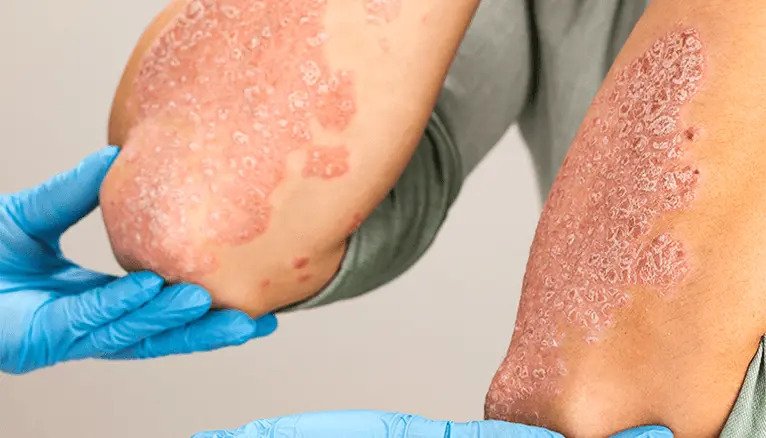5 Warning Signs of Psoriasis You Shouldn’t Ignore
Psoriasis is a long-term skin condition that affects millions of people across the globe. Although it is not contagious, this autoimmune disease can cause significant discomfort and impact daily life if left unmanaged.
Recognizing the warning signs early can help in seeking timely treatment and preventing complications. Here are five signs of psoriasis you should never ignore.
1. Red, Scaly Patches (Plaque Psoriasis)
The most common type of psoriasis is plaque psoriasis, which appears as raised red patches covered with silvery-white scales. These patches often develop on the elbows, knees, scalp, and lower back, but they can occur anywhere on the body.
The skin may feel itchy, sore, or even crack and bleed in severe cases. If these symptoms persist for more than a few weeks, it’s essential to consult a dermatologist.
2. Small, Drop-Shaped Spots (Guttate Psoriasis)
Another warning sign is the sudden appearance of tiny, red, drop-like spots on the skin, typically affecting children and young adults. Known as guttate psoriasis, this form is often triggered by bacterial infections, particularly strep throat.
The spots may cover large areas of the body and sometimes appear after an illness. If you notice such rashes following an infection, seek medical guidance to confirm whether it is psoriasis.
3. Painful Blisters Filled With Pus (Pustular Psoriasis)
Unlike acne, pustular psoriasis causes red, inflamed skin topped with white or yellowish blisters filled with non-infectious pus.
These blisters can be painful and are often accompanied by fever, chills, or severe itching. Though less common, this form can appear on the hands, feet, or widespread across the body. Because it can worsen quickly, prompt medical care is crucial.
4. Shiny, Red Lesions in Skin Folds (Inverse Psoriasis)
If you notice smooth, shiny, inflamed patches of skin in areas like the underarms, groin, or beneath the breasts, it could be inverse psoriasis.
These moist environments make the lesions more prone to irritation and discomfort. Unlike the scaly patches of plaque psoriasis, these lesions often look bright red and glossy. Because they occur in sensitive areas, proper diagnosis and treatment are important to avoid worsening symptoms.
5. Widespread Redness and Burning (Erythrodermic Psoriasis)
The rarest but most severe form of psoriasis is erythrodermic psoriasis, which causes extensive redness, scaling, shedding of skin, and a painful burning sensation.
This condition can affect the entire body and is considered a medical emergency. It can disrupt your body’s temperature regulation and put you at risk of serious complications. If you experience these symptoms, seek immediate medical attention.
What Causes Psoriasis?
Psoriasis develops when the immune system mistakenly attacks healthy skin cells, speeding up the skin cell renewal cycle. Instead of shedding normally, skin cells build up, creating thick, scaly patches. Genetics, infections, stress, alcohol, and certain medications such as beta-blockers or lithium can trigger or worsen flare-ups.
Managing Psoriasis
Though psoriasis has no cure, treatments can help manage symptoms:
Topical therapies like corticosteroid creams and vitamin D analogs.
Phototherapy, using controlled UV light exposure.
Systemic medications, including oral or injectable drugs for severe cases.
Takeaway
Persistent skin issues should never be ignored. If you experience red patches, scaling, unusual rashes, or other symptoms described above, consult a healthcare professional.
Early diagnosis and proper treatment can significantly improve your quality of life. Understanding psoriasis and its triggers gives you the power to take control of your skin health—so pay attention to the signs and act before the condition worsens.
